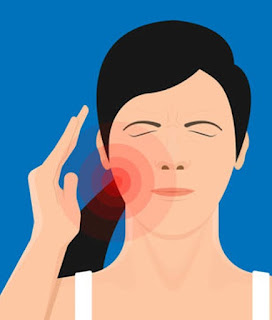Evolution of COVID-19 Reinfection and Immunity
In the early stages of the COVID-19 pandemic, reactivation and reinfection were considered rare. However, as the pandemic progressed, records for the length of infection and number of reinfections began to break. By October 2020, there were five cases of reinfection with more severe second cases. By the end of 2021, prolonged positive tests were observed, such as a man in Bristol who remained SARS-CoV-2 positive for 290 days. A case report published in May 2023 (aren't academic reports obsolete by the time they are finally published?) asked "Is it possible to get Covid infection 3 times?" in the title. Now this question is rhetorical. In a recent Malawi study, the risk of reinfection was highest in the immediate 3 to 6 months following the initial infection and declined substantially after that, and age demonstrated a significant association with reinfection. In Southern Brazil, comparative genomic and phylogenetic analysis confirmed that the fourth reinfection was caused by a virus of the same lineage. Claims of sixth and seventh reinfections emerged on social media by mid-2022 and spring of 2023, respectively. On the other hand, some individuals gained T-cell immunity against SARS-CoV-2 without a detectable infection.
An analysis from the National COVID Cohort Collaborative (N3C) revealed a mild protective effect of prior infection during the early and mid-stages of the pandemic, but this protection waned with the rise of the Omicron variant when prior infection was associated with a significant slightly elevated risk of severe disease. The post-COVID-19 population exhibited a high prevalence of cross-reactive antibodies to spikes from all Orthocoronavirinae genera. Infection and vaccination against SARS-CoV-2 have induced broadly cross-reactive binding antibodies, profoundly changing the coronavirus spike antibody landscape.
In a highly vaccinated population (94% with >=3 vaccine doses), almost 20% of persons infected with the Omicron variant reported Long COVID symptoms 90 days post-diagnosis. Research on Long-Covid patients has revealed expanded antibody responses to other common Coronaviruses, suggesting an 'original antigenic sin' where pre-existing immune responses shape the response to current infection. NeuroPASC individuals, in particular, showed significantly expanded antibody responses to other common coronaviruses, , including 229E, HKU1, NL63 and OC43, marking a key prognostic indicator of long COVID.
Here are a few recently publioshed case reports:
Nephrology
A 63-year-old male patient developed hematuria after the SARS-CoV-2 vaccination, leading to rapidly progressive glomerulonephritis and a diagnosis of IgA nephropathy. Treatment with pulse steroid therapy and mizoribine improved his renal function. SARS-CoV-2 mRNA vaccines activate T cells, which are involved in the pathophysiology of IgA nephropathy. Therefore, this case suggests that the exacerbation of IgA nephropathy by the vaccine favors the vasculitis aspect of the disease.
Ophthalmology
A 55-year-old woman experienced progressive vision loss and other symptoms 10 days after receiving the Pfizer–BioNTech COVID-19 vaccination. Treatment led to recovery, and this is the first reported case of this condition occurring as a potential side effect of the vaccine.
Rheumatology
A 52-year-old woman developed Remitting Seronegative Symmetrical Synovitis with Pitting Edema (RS3PE) syndrome after receiving the second dose of mRNA COVID-19 vaccination. She presented with hand edema, arthralgia, and morning stiffness. Treatment with prednisolone led to complete disappearance of symptoms.
REFERENCES
Chaves EB, Dantas Filho FF, Fernandes FS, Fighera TM, Callegaro FP. Is it possible to get Covid infection 3 times? Case report: Covid-19 reinfection. Clinical and Biomedical Research. 2023 May 29;43(1).
Bowe B, Xie Y, Al-Aly Z. Acute and postacute sequelae associated with SARS-CoV-2 reinfection. Nature medicine. 2022 Nov;28(11):2398-405.
Jacquet B, Curiale V, Mangeard H, Ferrer É, Chaillou S. Reactive systemic vasculitis in the course of a coronavirus OC43 infection: a case report. Geriatric Care. 2023 May 8;9(1).
Nathaniel Hendrix, Hythem Sidky, David K. Sahner, The N3C Consortium. Influence of Prior SARS-CoV-2 Infection on COVID-19 Severity: Evidence from the National COVID Cohort Collaborative medRxiv 2023.08.03.23293612; doi: https://doi.org/10.1101/2023.08.03.23293612
Marianna Spatola and others, Neurologic sequelae of COVID-19 are determined by immunologic imprinting from previous coronaviruses, Brain, 2023;, awad155, https://doi.org/10.1093/brain/awad155. Previously posted as: Spatola M, Nziza N, Deng Y, Jung W, Yuan D, Dinoto A, Bozzetti S, Chiodega V, Ferrari S, Lauffenburger DA, Mariotto S. Neurologic sequalae of COVID-19 are determined by immunologic imprinting from previous Coronaviruses. medRxiv. 2022:2022-11.
Fukuda, M., Kaneko, T., Kawai, T. et al. Secondary immunoglobulin A nephropathy with gross hematuria leading to rapidly progressive glomerulonephritis following severe acute respiratory syndrome coronavirus 2 vaccination: a case report. BMC Nephrol 24, 232 (2023). https://doi.org/10.1186/s12882-023-03287-y
Dutt DDCS, Lam J, Richards J. Bilateral Relentless Placoid Chorioretinitis Following Pfizer-BioNTech COVID-19 Vaccination: Specific Antigenic Trigger or Nonspecific Immune Activation? Ocul Immunol Inflamm. 2023 Aug 8:1-6. doi: 10.1080/09273948.2023.2239338. Epub ahead of print. PMID: 37552853.
Mulu Woldegiorgis, Gemma Cadby, Sera Ngeh, Rosemary Korda, Paul Armstrong, Jelena Maticevic, Paul Knight, Andrew Jardine, Lauren Bloomfield, Paul Effler. Long COVID in a highly vaccinated population infected during a SARS-CoV-2 Omicron wave – Australia, 2022 medRxiv 2023.08.06.23293706; doi: https://doi.org/10.1101/2023.08.06.23293706




Comments
Post a Comment